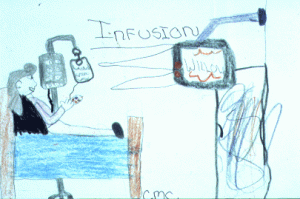 September 14, 2016 marks the twenty-six year anniversary of the first successful human gene therapy in the world. Doctors in the National Institute of Health, in Bethesda Maryland successfully completed the first gene transplant. The patient was a four year old, severely immunocompromised girl, who had adenosine deaminase (ADA) deficiency. She was powerless to fight off any infection. Doctors removed her white blood cells, and inserted the genes that coded for adenosine deaminase into her cells. They then infected her own cells with a virus, which delivered new genes into her cells… then transplanted her cells back into her body… and cured her… permanently. The cells replicated in her body and were able to produce the enzyme she previously could not produce. The potential of gene therapy was undeniable and from September 14, 1990 onward, gene therapy research exploded in an essentially unregulated environment. (The FDA convened a committee to evaluate gene therapy research proposals through the Recombinant DNA Advisory Committee, RAC, but ultimately stripped approval authority and slashed the membership from 25 to 15 members).
September 14, 2016 marks the twenty-six year anniversary of the first successful human gene therapy in the world. Doctors in the National Institute of Health, in Bethesda Maryland successfully completed the first gene transplant. The patient was a four year old, severely immunocompromised girl, who had adenosine deaminase (ADA) deficiency. She was powerless to fight off any infection. Doctors removed her white blood cells, and inserted the genes that coded for adenosine deaminase into her cells. They then infected her own cells with a virus, which delivered new genes into her cells… then transplanted her cells back into her body… and cured her… permanently. The cells replicated in her body and were able to produce the enzyme she previously could not produce. The potential of gene therapy was undeniable and from September 14, 1990 onward, gene therapy research exploded in an essentially unregulated environment. (The FDA convened a committee to evaluate gene therapy research proposals through the Recombinant DNA Advisory Committee, RAC, but ultimately stripped approval authority and slashed the membership from 25 to 15 members).
September 17, 1999 delineated the swift end of the “wild, wild west” of gene therapy. Trials had largely failed to deliver on their promises. The poster child for gene therapy was dead at eighteen years of age. His name was Jesse Gelsinger and he died at the University of Pennsylvania Hospital on that fateful day. His was the first death from gene therapy. The regulatory environment immediately shifted as the FDA began suspending clinical trials and as the biotech venture capital market swiftly cut funding.
On Monday, September 12, 2016 the FDA convened hearings to address how to regulate stem-cell treatments. Currently, many of these treatments have largely evaded regulation under 21 CFR 1271 because they belong to a special class of human cells, tissues, and cellular and tissue based products (HCT/P’s). They are “autologous,” or in other words, from an individual’s own body, and thus presumed safer than a typical drug or biologic. Because of this, the FDA has largely permitted the development of the autologous stem cell industry.
On the one hand, at times, these treatments have been wildly successful. There have been blind patients with macular degeneration, who have literally received the gift of sight through these treatments. There is hope that autologous stem cell transplantation could restore spinal cord function in patients with spinal cord injuries.
On the other hand, there are many doctors who believe stem cell research is nothing more than extortive experimentation, with no guarantees and lethal potential. Specifically, in a study from 2012, a seventeen year old girl suffered catastrophic demyelinating encephalomyelitis (i.e., a rare, sudden autoimmune attack of the brain and spinal cord) after receiving autologous stem cell treatments to cure her multiple sclerosis in Costa Rica. Another study from 2012, in which autologous stem cells were used for critical limb ischemia (i.e., severe obstruction of the arteries which reduces blood flow to the extremities) was terminated early after about half of the patients suffered heart attacks and blood clotting.
The death of Jesse Gelsinger and the deaths that have occurred since from gene therapy (e.g., an arthritis gene therapy patient, three brain cancer gene therapy patients, and a SCID-X1 patient) suggest the FDA proceed with caution and with oversight. While the potential of autologous stem plant transplantation is undeniable, the risk is real and documented. Autologous stem cell transplantation is decidedly different from simpler types of autologous transplantation, such as blood in anticipation of future surgery or skin grafts for wounds).
Picture courtesy of: https://history.nih.gov/exhibits/genetics/sect4.htm



